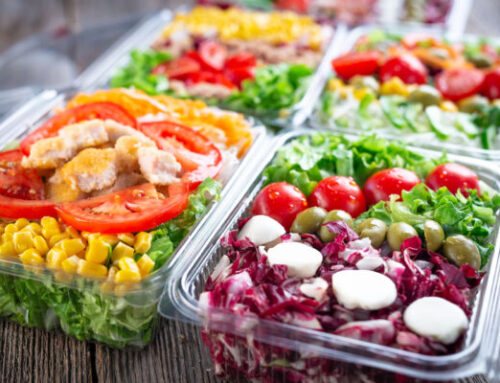Crush Your Weight Loss Goals with Clever and Kickass Caloric Deficit Hacks!
Achieving your weight management goals is not as daunting as it may seem. As a result, with a simple daily calorie deficit plan, you can set yourself up for sustainable success without drastic measures or fad diets. The key is to make small, easy changes that create habits that are easier for you to stick with. Whether you want to lose a little weight or stay on track with your current weight, these six simple steps can help you create a plan that works for you and fits into your life. We recommend consulting a healthcare professional before changing your health or wellness routines, ensuring you’re on the right track and that you can make weight management simple and stress-free!
A daily calorie deficit is one of the most effective methods for weight management. At the end of the day, you take in fewer calories than your body burns, creating a deficit that leads to weight loss. But how do you create a plan tailored to your needs, easy to follow, and sustainable? Whether you are new to the concept or a pro, the steps below will walk you through every step, including meal ideas and practical tips.
What Is a Daily Caloric Deficit, and Why Does It Matter?
A daily calorie deficit is when you eat fewer calories than your body burns. This ‘deficit’ prompts your body to use stored fat for energy, which is the foundation of successful weight loss plans. In simpler terms, it’s like spending more money than you earn, leading to a reduction in your savings. Similarly, a caloric deficit leads to a reduction in your ‘calorie savings,’ which is your body fat.
Why Is It Important for Weight Management?
- Sustainable Weight Loss: Unlike trendy diets, a caloric deficit allows flexibility in food choices while ensuring steady weight loss.
- Improved Health: Managing weight can improve life expectancy and enhance longevity.
- Customizable to You: A caloric deficit plan is adaptable to your lifestyle and health needs.
Start Your Weight Management Journey by Understanding Your Daily Caloric Needs
Calculate Your BMR (Basil Metabolic Rate)
Try online BMR calculators from credible sites like the Mayo Clinic or Healthline to make this easier.
Creating Your Caloric Deficit Plan
Setting up your plan takes a blend of science and practicality. Here’s how to get started:
1. Setting realistic goals
- 500-1,000 calories/day: Results in 1-2 pounds of weight loss weekly.
- Adjust based on how your body responds.
2. Choose Nutrient-Dense, High-Protein Foods
We emphasize this section because of the added value it brings to a sustainable weight loss plan. A protein-rich diet can be essential for optimal cellular repair that sustains vital bodily functions.
Moreover, protein helps preserve muscle mass and keeps you fuller longer. Ideas include:
- Chicken breast
- Low-fat Greek yogurt
- Quinoa and lentils
3. Plan Meals in Advance
Planning prevents last-minute unhealthy choices. For instance, batch cook meals or prep snacks like veggie sticks with hummus.
Tips for Success
- Food Swaps: Replace calorie-dense foods (e.g., chips) with lower-calorie alternatives (e.g., air-popped popcorn).
- Portion Control: Use smaller plates or weigh your portions to prevent overeating.
Unique Menu Ideas for Your Daily Caloric Deficit
To give you a head start, here’s a delicious, chicken-based menu for one day, totaling approximately 1,500 calories:
Breakfast (300 Calories)
- Scrambled egg whites with spinach and cherry tomatoes (120 cal)
- One slice of whole-grain toast (100 cal)
- Black coffee or green tea (0 cal)
Morning Snack (150 Calories)
- 10 raw almonds (70 cal)
- One medium apple (80 cal)
Lunch (400 Calories)
- Grilled chicken breast (120g, 200 cal)
- Quinoa (1/2 cup cooked, 110 cal)
- Steamed broccoli (1 cup, 50 cal)
- Olive oil drizzle for flavor (1 tsp, 40 cal)
Afternoon Snack (100 Calories)
- Low-fat Greek yogurt (100g, 100 cal)
Dinner (550 Calories)
- Herb-marinated baked chicken thigh (150g, 250 cal)
- Roasted sweet potatoes (1 cup, 180 cal)
- Side salad with balsamic dressing (100 cal)
The variety of nutrient-rich ingredients ensures you stay energized while enjoying your meals.
4. Incorporating Exercise for an Additional Boost
Physical activity helps increase your daily calorie burn, complementing your daily calorie deficit. Here are some simple yet effective ideas:
- Walking: 1 hour can burn around 300 calories.
- Resistance Training: Build muscle, which increases calorie burn—30 minutes burns around 200 calories.
- Cycling or Swimming: Fun, low-impact exercises that torch 250-400 calories per 30 minutes.
Find an activity you enjoy to make it part of your lifestyle.
5. Tracking and Adjusting Your Plan
Consistency is key, but tracking helps you stay on course. Use apps like MyFitnessPal to log meals and exercises. Regularly evaluate your progress:
- Are you losing around 1-2 pounds per week?
- Do you feel energetic and satisfied?
- Reduce calorie intake or activity levels as needed.
6. Empowering Success and Staying Motivated
Transitioning to a daily calorie deficit plan can feel daunting, but the benefits are worth it. You’ll not only see physical changes but also feel more empowered in your health choices. Remember:
- Small, consistent changes yield long-term results.
- Stay patient and enjoy the process.
Above all, by following these steps, you’ll be set up for success in reaching your goals.
Want More Tips? Join Our Newsletter for updates.
We’d love to hear how your caloric deficit plan is going. Share your progress or connect with others in our health-conscious community.





